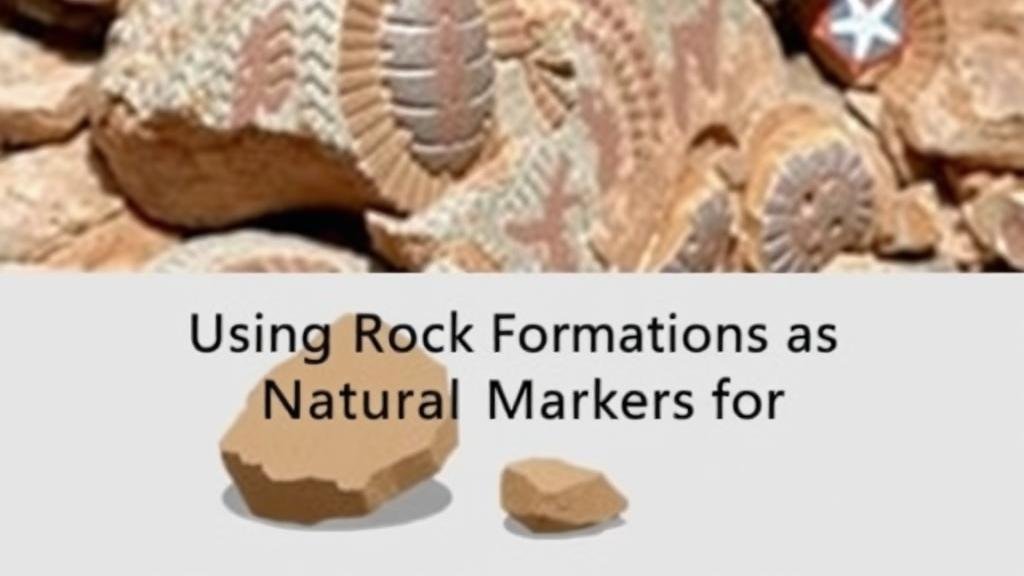Using Rock Formations as Natural Markers for Artifact Recovery
Using Rock Formations as Natural Markers for Artifact Recovery
Rock formations have long served as significant indicators in both archaeological exploration and artifact recovery. By utilizing these geological structures as natural markers, researchers enhance their ability to locate and access historical materials embedded in the earth. This article will explore the reasons why rock formations are effective markers, review real-world examples, and discuss techniques for using these features in artifact recovery.
The Importance of Rock Formations in Archaeology
Rock formations provide an essential context for archaeologists for several reasons. Firstly, they serve as environmentally stable landmarks that remain consistent over time, allowing researchers to establish a reliable location reference for their studies. Secondly, many rock formations are associated with specific geological processes, which can influence historical human activity.
Geological Context and Human Habitation
Understanding the geological context of an area helps archaeologists appreciate how ancient civilizations interacted with their environment. For example, certain rock types can retain moisture or provide natural shelter, making them favorable locations for settlements.
- For example, the limestone caves found in at least ten different countries have been identified as places of habitation for early humans, due to their ability to provide shelter and strategic vantage points.
- Similarly, volcanic rock formations in the Mediterranean region indicate past human activity, where inhabitants utilized the pyroclastic material for tool-making.
Examples of Rock Formations as Recovery Markers
Several documented archaeological cases highlight the use of rock formations as markers for artifact recovery. One prominent example is the use of mesa formations in the southwestern United States. Here, researchers have frequently uncovered ancient Puebloan artifacts situated near these elevated structures.
In another case, the unique granite outcroppings of the Scottish Highlands have been observed to serve as key indicators for the location of burial mounds from the Iron Age. Archaeologists have employed aerial imagery in tandem with ground reconnaissance around these formations, dramatically increasing efficiency in locating artifacts buried underground.
Techniques for Utilizing Rock Formations in Artifact Recovery
Adopting systematic approaches to leverage rock formations enhances the likelihood of successful artifact recovery. following techniques are commonly used:
- Mapping and Surveying: Comprehensive mapping of rock formations should be conducted prior to excavation. This includes employing GIS technologies that integrate both topographical and geological data to create detailed recovery plans.
- Geophysical Methods: Utilizing geophysical survey techniques, such as ground-penetrating radar (GPR), provides insights into the subsurface materials around rock formations without invasive digging, helping identify potential sites for recovery.
- Stratigraphic Analysis: Understanding sediment layers in relation to rock formations allows archaeologists to determine periods of human activity, leading to more focused excavation efforts.
Challenges and Limitations
While rock formations are invaluable for artifact recovery, there are notable challenges. Natural erosion, human development, and climate change can all alter landscapes, making previous markers less reliable over time. Also, careful consideration must be given to the cultural significance of rock formations to avoid undermining indigenous rights or archaeological integrity.
For example, the rapid urbanization in historical regions may lead to the degradation of rock formations, resulting in lost context for artifacts that are left behind. This necessitates a continuous dialogue between archaeologists and local communities to maintain respect for both cultural heritage and sustainability.
Actionable Takeaways
Rock formations can significantly bolster archaeological efforts by acting as natural markers in the quest for artifacts. Here are some actionable takeaways:
- Prioritize geological surveys that integrate remote sensing technologies to improve mapping of significant rock formations.
- Incorporate interdisciplinary collaboration involving geologists, archaeologists, and local historians to enhance context and recovery outcomes.
- Engage with local communities to ensure ethical and sustainable practices in artifact recovery, preserving both cultural and natural heritage.
To wrap up, rock formations serve as essential navigational aids for archaeologists engaged in artifact recovery. By understanding their geological and cultural significance, researchers can improve excavation outcomes while fostering a respectful relationship with the landscape and its history.


